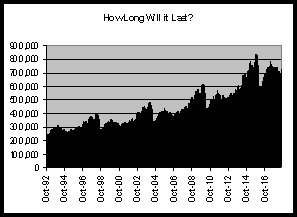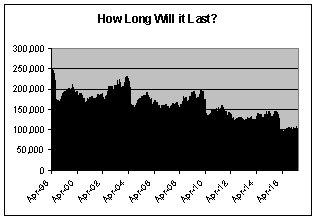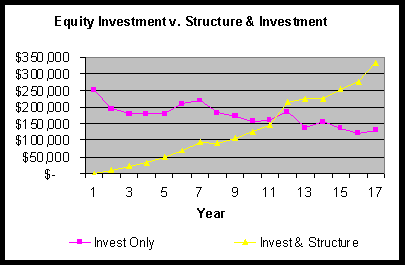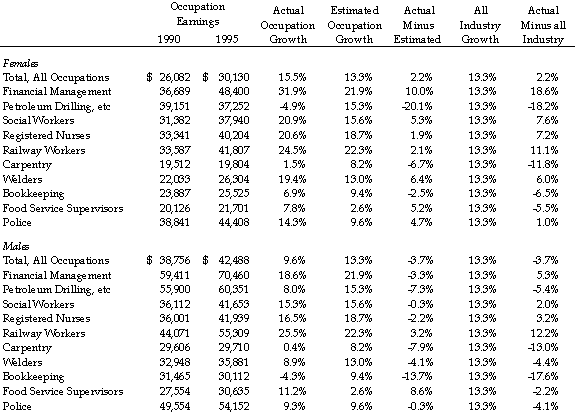by Christopher Bruce
This article was originally published in the autumn 1998 issue of the Expert Witness.
In the summer 1998 issue of this newsletter, I introduced the academic discipline of “the economic analysis of tort law.” I argued in that issue that the traditional legal analysis of torts employs an ex post orientation. That is, legal scholars traditionally assume that the function of tort law is to compensate victims for harms that have already occurred. Economists, on the other hand, argue that the evolution of torts can better be understood if one uses an ex ante paradigm. In this paradigm, the courts behave as if they are less concerned with the resolution of the cases before them than they are with the establishment of precedents that will affect future behavior. In particular, economic analysis “predicts” that the courts will prefer those rules that encourage parties to select cost-minimising behaviors.
In the summer 1998 article, I provided examples of a number of situations in which the courts appeared to have made explicit use of ex ante reasoning. In this article, I will argue that the economic approach can also be used to cast light on the development of the tort rules of negligence.
Legal Versus Economic Analysis
If one adopts the proposition that the function of tort law is to compensate accident victims, it is difficult to rationalise the rules of negligence. Those rules require that the victim show that the defendant was negligent before compensation will be ordered. But as many defendants are not negligent, many victims are not compensated. Why would a body of law whose purpose was to compensate victims contain a major “escape clause” which would deny compensation to a large percentage of victims?
One could begin to answer this question by modifying the traditional argument. Perhaps tort law is not designed to compensate all accident victims, just those who are deemed “worthy.” But this begs the questions of who is worthy and why it is that the “worth” of the victim should be defined by the behavior of the defendant.
I will argue in this article, that negligence rules can better be understood if we view their purpose as being cost-minimisation. Under this approach, a party will only be found to have been negligent (and therefore potentially liable to pay damages) if he or she had failed to take some precaution for which the cost was less than the benefit (measured in terms of accident costs avoided). That is, I will argue that the function of the tort rules of negligence is to send signals to potential (future) “injurers” that if they fail to take appropriate precautions, they will be made to bear the costs that result.
Negligence Rules: an Economic Exposition
The economic model can best be understood using a numerical example. Assume the following “facts,” (based, loosely, on Anderson v. County of Ponoka [1980] 12 ALR 320):
- One of the stop signs at the intersection of two country roads is knocked over sometime on Saturday evening.
- The County responsible for those roads becomes aware of this on Sunday morning but decides to wait until Monday morning to replace the sign, in order to save $100 overtime pay to its road crew.
- Sunday evening, Mr. A, unaware that the sign is missing, assumes that he has the right-of-way, enters the intersection without slowing, and collides with Ms. B’s car.
- The two cars and their occupants suffer damages which total $25,000.
- At trial, the court accepts the evidence of a traffic expert that the probability, per day, that such an accident will occur is 3/1,000 if there is no stop sign in place and 1/1,000 if there is a stop sign.
Was the county negligent? Economic analysis predicts that the court will say “no.” Why? Assume that rural stop signs are frequently knocked down on Saturday evenings. If the relevant highway departments wait until Monday to replace the stop signs, there will be three accidents every 1,000 times a sign is knocked down. Hence, there will be $75,000 damages for every 1,000 such occurrences. ($75,000 = 3 x $25,000.) If the counties replace the stop signs immediately, the number of accidents will fall to one in every 1,000 occurrences, reducing the accident costs to $25,000, a saving of $50,000. But, in order to obtain that “saving,” counties will have to send out 1,000 repair crews at an overtime cost of $100 each, or $100,000 in total. The $50,000 “saving” will have cost $100,000.
Put another way, the average cost of precautions, per event, will be $100 and the average benefit of those precautions (measured in terms of accident costs saved) will be (2/1,000) x $25,000, or $50. As the economic model predicts that the court will only encourage behaviour whose cost is less than the benefit, the economic prediction is that the court will not find the county to be negligent in this case.
It can be seen from this case that three factors are predicted to enter the court’s calculations:
- the cost to the defendant of taking a precaution to avoid the accident, (C);
- the probability that a precaution which could have been taken by the defendant would have prevented the accident, (P); and
- the expected cost of the accident, (A).
In particular, it is predicted that the defendant will be found to have been negligent if there was some precaution, not taken by the defendant, whose cost was less than the cost of the accident multiplied by the decrease in the probability of an accident which would have occurred had that precaution been taken. In algebraic terms, the party is found negligent if C < (A x P).
Is the Law Consistent With the Economic Model?
In the U.S., this prediction was confirmed in one of the leading cases on negligence, U.S. v. Carroll Towing. In that case, Justice Learned Hand concluded that negligence was to be found only if the burden (cost) of precautions was less than the probability of the accident multiplied by the gravity (cost) of the accident — precisely the formulation which I derived above from the economic model.
In British/Canadian jurisprudence, confirmation of the prediction is less direct, but persuasive nevertheless — sufficiently persuasive that in recent editions of Canadian Tort Law Allen Linden has organised his discussion of the rules of negligence around the “Learned Hand rule.” In Wagon Mound No. 2, for example, the court concluded that a party could be found negligent even if the probability of an accident was low as long as the cost of the accident was high. Arguably, it was the court’s view that the cost of the accident multiplied by the probability that it could be avoided should be weighed against the cost of avoidance in order to determine negligence — again, precisely the prediction made by economic reasoning. Other leading cases which are consistent with the economic model include Bolton v. Stone, Priestman v. Colangelo, and Reibl v. Hughes.
Applying Economic Analysis to the Law
Many “day-to-day” cases also employ reasoning which is consistent with the economic approach to the determination of negligence. For example, in Hewson v. City of Red Deer (1977) 146 DLR (3d) 32 (Alta. CA), a City employee left the keys in the ignition of a bulldozer. Subsequently, the bulldozer was stolen and driven into the side of Hewson’s house. The City was found not to be negligent largely because (a) the bulldozer was left two blocks from Hewson’s house; (b) it was left at midnight; and (c) the operator was absent for only 25 minutes. All three of these factors suggest that the probability of an accident was quite low. And the first factor suggests that the average damages which might occur if the bulldozer was stolen were low (because the bulldozer would have to be driven a long distance before causing any harm.)
In Weaver v. Buckle (1982) 35 AR 97 (Alta. QB), Weaver (a child) ran out in front of Buckle’s car and was injured. The court implied that it would not normally have found Buckle to be negligent for causing this accident. However, as the road was narrow, it found that he should have been driving more slowly, to take account of the general conditions of that road. The court concluded that if he had been driving more slowly, the probability that this accident would have occurred would have been reduced substantially. Buckle was found 60 percent liable. In economic terms, this finding suggests that it is not simply this accident which determines the “costs of an accident” (A, in my terminology). Rather, it is all accidents which might have been prevented had the defendant taken additional precautions.
In Jordan v. Schofield (1996) 148 NSR (2d) 104 (NSSC), Schofield’s 7 year-old son played with a lighter and caused a fire in an apartment building belonging to Jordan. The court concluded that Schofield was not negligent. Although parents are responsible for taking “reasonable” precautions to watch their children and to put harmful things out of their way, at some point the costs of additional precautions become prohibitive. Parents will not be found negligent for failing to take precautions beyond that point. For example, parents will not be negligent for leaving children unattended around “ordinary” dangers (such as knives or scissors) for a few minutes. They may, however, be negligent for leaving their children unattended around such dangers for longer periods of time, or for leaving them for only a few minutes around more dangerous items (such as fires burning in fireplaces). In economic terms, the cost of taking additional precautions is to be weighed against the probability that an accident will occur if those precautions are not taken.
To conclude, given that no Canadian court has formally adopted the “Learned Hand rule” it would be difficult to base an argument before our courts on economic reasoning alone. Nevertheless, if one accepts that the three components of the “Learned Hand Rule” (C, P, and A) play an implicit role in the determination of negligence, an understanding of their function may help to clarify the legal analysis in difficult cases.

Christopher Bruce is the President of Economica and a Professor of Economics at the University of Calgary. He is also the author of Assessment of Personal Injury Damages (Butterworths, 2004).



